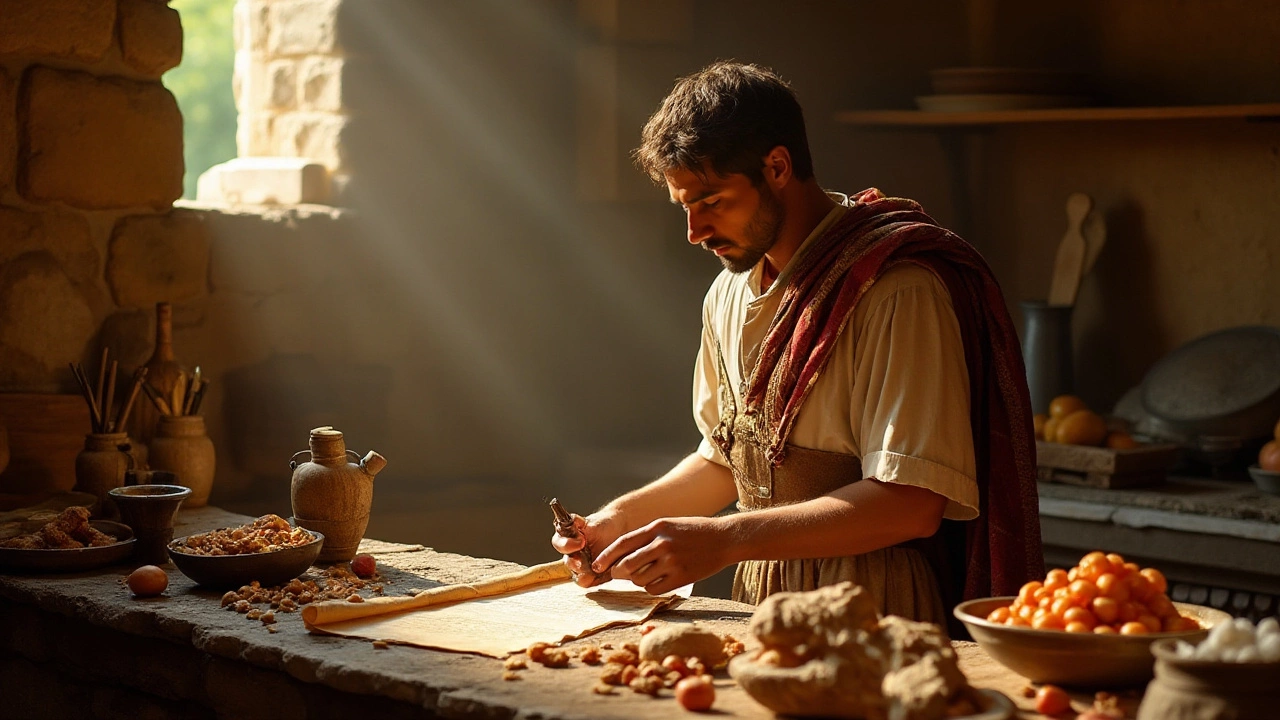Oldest Dessert Recipe: The First Sweet Ever Made
Ever wondered what people ate for dessert thousands of years ago? Archaeologists have uncovered a simple honey‑cake that dates back to around 2600 BC in ancient Mesopotamia. It’s basically a flatbread sweetened with honey, studded with dates and crushed nuts. The recipe survived on clay tablets, giving us a direct line to the taste of early civilization.
This ancient treat wasn’t fancy – it was made with what farmers could grow and store: barley flour, honey, dried dates, and walnuts. The batter was spread on a hot stone or a clay oven and cooked until it turned golden. The result was a dense, chewy slice that gave a quick energy boost after a hard day in the fields.
What Is the Oldest Known Dessert?
The “Honey‑Barley Cake” is the oldest documented dessert we know of. The tablet from the city of Ur mentions mixing barley flour with water, adding a generous drizzle of honey, and sprinkling chopped dates and nuts on top. After shaping it into a flat disc, the bakers placed it on a pre‑heated stone slab. The whole process took less than an hour, perfect for a busy household.
What makes this recipe stand out is its simplicity. No leavening agents, no sugar – just the natural sweetness of honey and dates. The flavor profile is earthy from the barley, sweet from the honey, and slightly tart from the dates. It’s a reminder that good food doesn’t need a long ingredient list.
How to Make the Ancient Recipe Today
Want to taste history? Here’s a modern take that stays true to the original ingredients while using tools you have in a typical kitchen.
- Gather the basics: 1 cup barley flour (or a mix of whole‑wheat flour if barley isn’t handy), ½ cup honey, ¼ cup warm water, ½ cup chopped dates, ¼ cup chopped walnuts, a pinch of salt.
- Mix dry and wet: In a bowl, combine the flour and salt. In another bowl, whisk honey with warm water until smooth.
- Combine: Pour the honey‑water mix into the flour, stir until a thick batter forms. It should be sticky but spreadable.
- Add fruit and nuts: Fold in the dates and walnuts. They’ll stay in place when you spread the batter.
- Cook: Heat a non‑stick skillet over medium heat. Lightly oil it, then spoon a quarter cup of batter onto the pan, spreading it into a 4‑inch circle.
- Flip and finish: Cook for 2‑3 minutes until the edges look set, then flip and cook another 2 minutes. You’re looking for a golden‑brown crust.
- Serve: Let it cool a minute, then enjoy warm. A drizzle of extra honey on top amplifies the ancient vibe.
That’s it – a 5‑minute journey back to 2600 BC. The texture will be denser than modern cakes, but the flavor will hit you with the same sweet‑earthy combo that early bakers loved.
If you want to experiment, try swapping barley for oat flour or adding a pinch of cinnamon, which wasn’t available back then but works well today. The key is to keep the honey, dates, and nuts as the main sweeteners.
Cooking this recipe does more than fill your stomach; it connects you to the people who first discovered that honey could turn grain into a treat. Next time you bite into that honey‑barley slice, think of the countless hands that mixed, baked, and shared it across generations. It’s a tiny taste of history you can bring to your kitchen right now.

History and Recipes of Ancient Desserts
Journey back in time to explore one of the oldest desserts known to humans. This article delves into the origins of ancient sweets, highlighting historical recipes and cooking techniques. Discover how early civilizations indulged their sweet tooth with natural ingredients and learn how to recreate these timeless treats in your kitchen. From the construction of basic recipes to intriguing historical insights, this exploration reveals how dessert culture has evolved.
More Detail